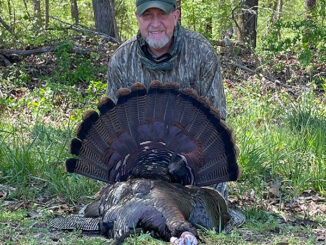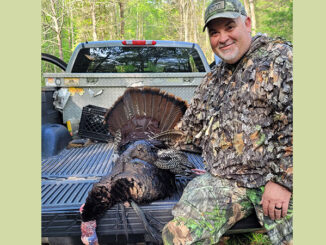
Abundance of food draws sharks of many species to nearshore areas
July is the peak of summer and its heat, and anglers and vacationers are looking for a place to cool down. One of the few places you can actually cool down is in the water. But anglers may want to second guess dangling their feet off the boat, because sharks are thick and biting tasty looking things.
Tom Cushman of Little River’s Calmwater Fishing Charters spends plenty of time on the water, and many of his clients want to take a run at one of the huge sharks that roam these waters.
“We have a strong showing of sharks this time of year just off our beaches. We get hammerheads, spinners, black tips, duskies, and some huge tiger sharks,” said Cushman (843-997-5850). “We are covered up in food; that makes our area a real destination for several species of sharks.”
Cushman will fish for sharks anywhere from nearshore reefs to the coastal fringe where menhaden schools are abundant.
“Sharks will be concentrated around any place where food is abundant, and places in 25- to 30-foot water are key depths where we get our best bite,” he said.
Pods of menhaden, the tips of the jetties and nearshore livebottom areas are prime places to find sharks. Cushman will drift live and cut bait around these places and will usually get a bite fairly quickly. One of his favorite places to find sharks is behind the many trawlers that work just off the beaches this time of year.
“Get behind the shrimp boats. A lot of times, you can see a dozen black tips following the boats, picking off stuff they stir up,” he said.
If the sharks aren’t really biting, Cushman will use their extraordinary sense of smell to his advantage. Sharks are known to be able to detect a drop of blood at hundreds of yards away.
“I love to chum for sharks because it works so well. I cut up fresh spots, bluefish, croakers — any kind of oily fish — place it in a chum bag to create a slick out the back of the boat,” he said.
Any sharks crossing downcurrent will be able to detect Cushman’s scent trail, allowing him to hook up not too long after deploying the chum bag.
Cushman will cover the water column from the bottom to the surface by drifting along with live bait or chunks of fresh-cut fish.
“I will have one bait 5 feet off the bottom, one halfway to the top and one right at the surface to figure out where they are biting the best,” he said.
Strong terminal tackle is required, with strong hooks and abrasion-resistant monofilament or heavy duty piano wire. Cushman will use 10-foot leaders when he expects to encounter big sharks and 4-foot leaders for smaller sharks. Wire (size 4 to 9) or monofilament leaders (150- to 250-pound test) are required. He will also use a heavy gauge 7/0 to 8/0 circle or J-style hook.
In July, just about every species of shark that frequents the Carolina coast has arrived along the Grand Strand. For anglers looking for a courageous battle, one of the thousand sharks visiting these waters would be a worthwhile opponent. Find the food,and one of these toothy critters will be very close by.





Be the first to comment